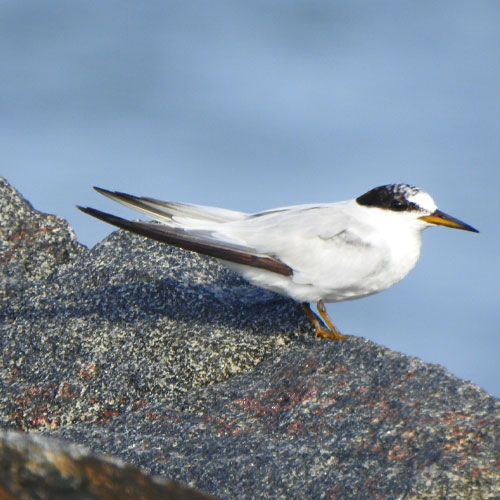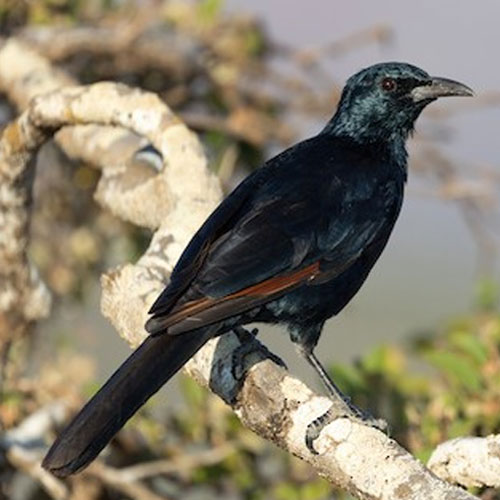Bird Watching
Socotra has many bird species, each adapted to a specific environment and some a particular way of life. A total of 225 species of bird have been recorded in the Socotra archipelago. Of the 45 that breed regularly, five are globally threatened, including the Egyptian Vulture (Neophron percnopterus ), Socotra buzzard (Buteo socotraensis), Abd Al Kuri sparrow (Passer hemileucus), and Socotra bunting (Emberiza socotrana). Socotra has Endemic, common birds and can be seen during the trip Socotra, as mentioned below and Cited by the research man( Richard Porter Birdlife International)

An island endemic with a small but widespread population. Found mostly in the hills but also often on the plains and even on the outskirts of Hadibu. Two places to observe it easily areWadi Denegen (just a few kilometers south of Hadibu) and Wadi Ayhaft (to the west ofHadibu). The taxonomy of this bird of prey is under review.

The best places to see this handsome wader are the Noget and the grassy plains to the east of Hadibu.

Resident & winter visitor. It breeds on the outer islands but is common along the coasts of Socotra throughout the year

A breeding summer visitor to parts of the Socotra coast. Also seen throughout the year but rare in winter. Coastal areas along the north shore offer the best chance of finding it, but especially at roost on the Hadibu beachesr

Breeding summer visitors to the outer islands but present offshore throughout the year. Sometimes huge feeding flocks can be observed from the coast near Hadibu.

This resident breeder is common and widespread, but often difficult to see during the day. It is best seen at dusk when groups come down to drink at freshwater pools and wadis with running water. Two places to visit to witness this are Wadi Shek (to the east of Hadibu) and Wadi Denegen (to the south).

A resident breeder whose taxonomy is under review. Widespread and fairly common but usually only heard from dusk and throughout the night. It is often possible to locate it while it is still light – just follow the calls (song) until you find it! A good locality to look at is the palm woodlands at Wadi Shuq. At night you will need a good torch.

This little-understood species breeds on Socotra in the spring and summer but appears to be present throughout the year except for December and January. Flocks can be seen in highland reas – at dawn and dusk is often a good time – but also when the storm clouds gather

Globally threatened island endemic which is found mostly in low-lying coastal vegetation, where it is easily discovered by its distinctive song flight. A good place to see it is in the very low acacia scrub west of Hadibu Port.

Can be elusive, but with patience you will easily see it! A common and widespread resident endemic, which can be found almost anywhere with trees or low bushes

A common resident, Found throughout the island and even in small flocks in Hadibu. It has a longer, wedge-shaped tail compared to the Socotra Starling and the female has a grey head.

A fairly common endemic which is found mostly in the highland areas where there are fruiting trees. Often found near Dragon’s Blood Trees. Make sure you do not confuse it with the similar Somali Starling.

Winter visitor and the commonest migrant on Socotra. Can be seen nearly everywhere from October to March.

A common and widespread resident endemic, which can be found anywhere with trees, though not in towns and villages.

The commonest endemic – is found everywhere throughout Socotra, even in towns and villages

A common and widespread resident, easily seen wherever you are.

Yemen’s national bird and fairly easily found in the higher areas with trees, especially those with fruit. A visit to Wadi Denegen, the highlands at Skand, or Wadi Ayhaft should easily locate it.

Globally threatened and the most difficult of the endemics to see. It is found in isolated spots in the highland areas, especially on the slopes at Skand and the cliffs at Mahlih. However, it is best to contact one of the guides mentioned above to take you. First, make sure they really do know where to find it!

A breeding visitor to Socotra, nesting in remote cliffs. Present offshore throughout the year, often in feeding flocks. Sometimes these are visible from the shore (such as from Hadibu) but usually, it is necessary to hire a boat and go out to sea for a few kilometres. The best place to hire a boat is Qalansiya.

A Globally threatened seabird only known to breed on Socotra where it was discovered nesting in 2000. Present offshore throughout the year but you will need to hire a boat and go out to sea for a few kilometers for a chance of seeing it well. The best place to hire a boat is Qalansiya.

Breeds on cliffs and present offshore throughout the year. You can never guarantee you will see this fine seabird but your best chance is watching from the cliffs at Qalansiya or at Ras Hebak (just to the west of Hadibu), or going out in a boat from Qalansiya.

Breeds on the outer islands can be observed offshore throughout the year, often in large flocks, especially from the cliffs at Qalansiya.

Breeds on the outer islands but is regularly seen from the shore around the coast especially where fishermen are going out in boats.

Both a resident breeding bird and a winter visitor from the large colonies in the Arabian Gulf. It is Globally threatened. Often seen feeding offshore, sometimes very close in, but the largest numbers can be seen by taking a boat from Qalansiya to Shuab, passing along the edge of some very impressive cliffs.

Globally threatened, but common and widespread on Socotra which probably has the highest concentration in the world. It is a familiar bird in all towns and villages and will frequently gather at picnics.
